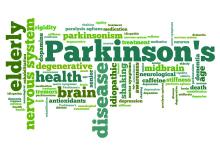Patients who were followed for more than 5 years after truncal vagotomy had about a 40% lower risk of being diagnosed with Parkinson’s disease, compared with matched population controls, according to the results of a cohort registry study.
Selective vagotomy did not decrease the risk of Parkinson’s disease (PD), however, reported Bojing Liu of Karolinska Institutet, Stockholm, and her associates. The findings, which reflect those from a prior Danish study, “provide preliminary and indirect support” for the idea that Lewy pathology in PD begins in peripheral nerves and spreads to the central nervous system through “prion-like mechanisms,” they added.
Gastrointestinal symptoms such as constipation are among the most frequent nonmotor symptoms in PD, and cell-to-cell transmission of alpha-synuclein has been observed in grafted neurons from PD patients and in a transgenic mouse model of PD. Importantly, resecting the vagus nerve before treating mice with rotenone to induce alpha-synuclein accumulation “stopped the spread of PD-like pathology,” the researchers noted. Because few data existed to help determine whether vagotomy reduced the risk of PD in humans, they used national Swedish registries between 1970 and 2010 to compare 9,430 vagotomy patients with 377,200 population controls matched by age and sex (Neurology. 2017 Apr 26. doi: 10.1212/WNL.0000000000003961). A total of 101 (1.07%) vagotomy patients developed PD, as did 4,829 (1.28%) controls over 7.3 million person-years of follow-up. Crude rates of PD per 100,000 person-years were 61.8 for vagotomy overall, 80.4 for truncal vagotomy, 55.1 for selective vagotomy, and 67.5 for controls. Vagotomy overall was not linked to PD risk in the unadjusted model (hazard ratio, 0.96, 95% confidence interval, 0.78-1.17) or after the researchers controlled for country of birth, chronic obstructive pulmonary disease, diabetes mellitus, vascular diseases, rheumatologic disease, osteoarthritis, and comorbidities. However, truncal vagotomy trended toward a protective effect in the adjusted model (HR, 0.78; 95% CI, 0.55-1.09), and this association reached statistical significance after researchers restricted the analysis to patients who were followed for more than 5 years (HR, 0.59; 95% CI, 0.37-0.93). A similar trend existed among patients who were followed for more than 10 years after truncal vagotomy (HR, 0.62; 95% CI, 0.36-1.08). In contrast, selective vagotomy “was not related to Parkinson’s disease risk in any analyses,” the investigators wrote.The findings reflect a prior registry study that found a 15% decrease in the risk of PD compared with the general population more than 5 years after truncal vagotomy (Ann Neurol. 2015 Oct. 78[4];522-9). “This Danish study, however, did not differentiate truncal from selective vagotomy and thus might have underestimated the association of truncal vagotomy with PD,” the researchers said.
Another study found that truncal vagotomy exhibited a nonsignificant protective effect overall and an insignificantly increased risk of PD more than 20 years after surgery (Neurology Today 2015 Dec 3;15[23]:27-30). Likewise, the current study yielded “stronger evidence for PD risk reduction more than 5 or 10 years after truncal vagotomy,” and the protective effect appeared to weaken with longer follow-up, the investigators noted. If PD started at multiple sites within the peripheral nervous system, “even truncal vagotomy may delay, rather than eliminate, the risk for PD,” they emphasized. “Indeed, abnormal alpha-synuclein accumulation has been found throughout the digestive tract of patients with PD with descending pattern of density, and even in the submandibular gland in patients with preclinical PD.”
The study was funded by the Swedish Research Council for Health, Working Life and Welfare, the Parkinson Research Foundation in Sweden, the Karolinska Institutet, the Swedish Society for Medical Research, the Stockholm County Council, and Karolinska Institutet–NIH Doctoral Partnership Program in Neuroscience. The investigators had no relevant disclosures.


